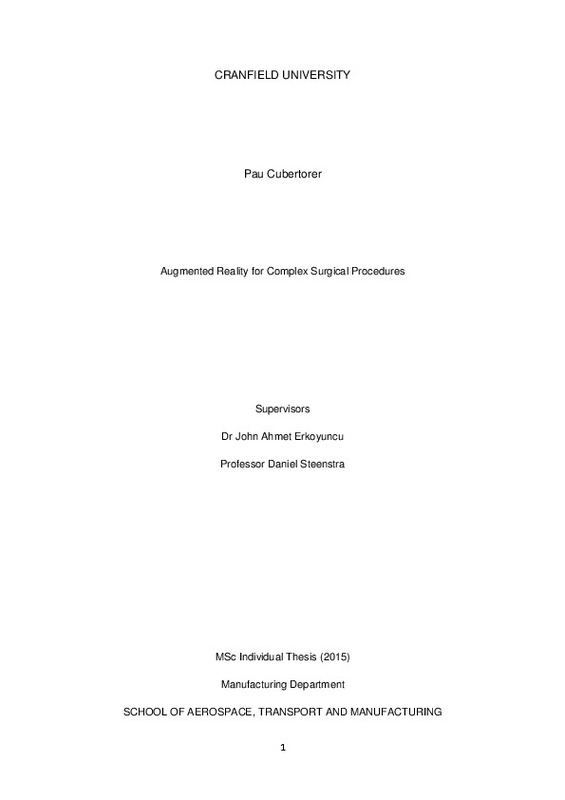JavaScript is disabled for your browser. Some features of this site may not work without it.
Buscar en RiuNet
Listar
Mi cuenta
Estadísticas
Ayuda RiuNet
Admin. UPV
Augmented reality for complex surgical procedures
Mostrar el registro completo del ítem
Cubertorer Segarra, P. (2015). Augmented Reality for Complex Surgical Procedures. http://hdl.handle.net/10251/74765.
Por favor, use este identificador para citar o enlazar este ítem: http://hdl.handle.net/10251/74765
Ficheros en el ítem
Metadatos del ítem
| Título: | Augmented reality for complex surgical procedures | |||
| Autor: | Cubertorer Segarra, Pau | |||
| Director(es): | Ahmet Erkoyuncu, John Steenstra, Daniel | |||
| Fecha acto/lectura: |
|
|||
| Resumen: |
[EN] In 2014, 7 million of CT and MRI scans were used pre and intraoperatively in the UK, flat 2D images
whose potential is not fully used. Surgeons can use Volume rendering techniques to create a 3D
model which they ...[+]
|
|||
| Palabras clave: |
|
|||
| Derechos de uso: | Reconocimiento - No comercial - Sin obra derivada (by-nc-nd) | |||
| Editorial: |
|
|||
| Titulación: |
|
|||
| Tipo: |
|
recommendations
Este ítem aparece en la(s) siguiente(s) colección(ones)
-
ADE - Trabajos académicos [3699]
Facultad de Administración y Dirección de Empresas






